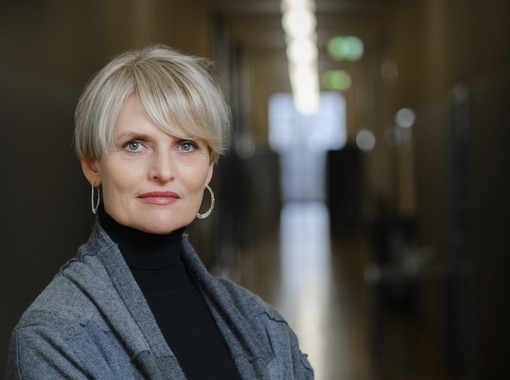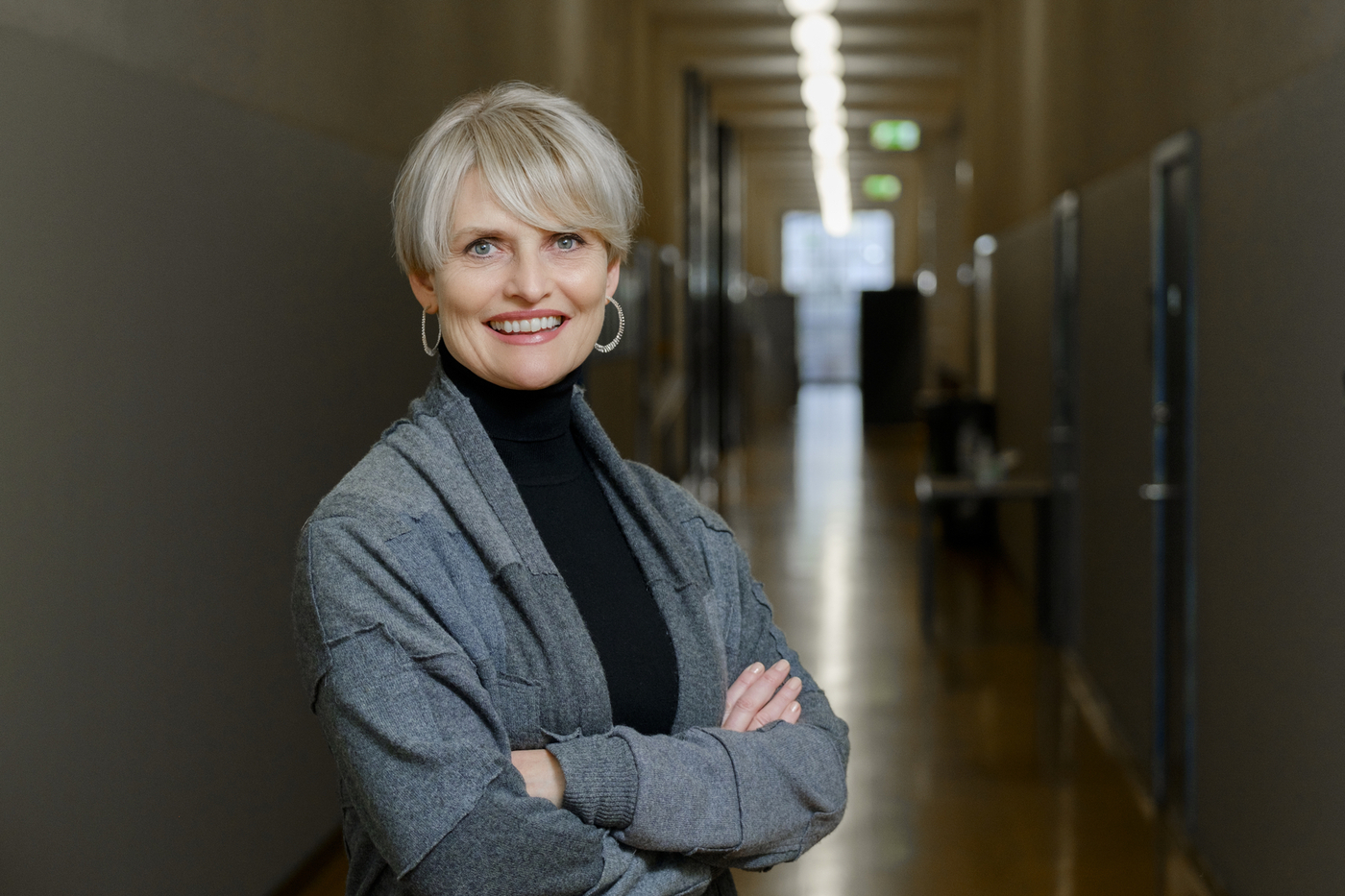"Falls are a public health issue among elderly people all over the world, since elderly people are most at risk of serious consequences following a fall. Systematic and evidence-based fall prevention is essential. Fall prevention is about reducing the number of people who suffer falls, lowering the frequency of falls, and minimising serious consequences," explains Sólveig Ása Árnadóttir, professor in physiotherapy, who is currently researching older adults' experiences of falls with the goal of developing more systematic fall prevention and services for this demographic. Her team's initial findings show, for example, that men are likely to downplay the significance of a fall and are less willing to discuss the experience.
Sólveig Ása's research career has focused on physical ability and disability, independence and quality of life for elderly people living in their own homes. "Falls and the fear of falling are highly significant in this context. I am really interested in finding out about the impact of environmental challenges, such as living in a rural location and having to consider factors like the landscape, the climate and access to services," explains Sólveig.
A lack of research into falls
Research into the frequency and epidemiology of falls in Iceland is limited "and across the world there is a demand for research that can be used to develop evidence-based fall prevention for elderly people. In Iceland, as in other countries, we need better knowledge about the health and skills of older adults. For example, we need to learn more about people living in challenging environments, such as rural areas where services are limited."
There are two parts to Sólveig's current work. Along with Master's students Ingibjörg V. Hafsteinsdóttir and Ingunn K. Jónsdóttir, Sólveig has been researching falls in people who have a panic button. The data came from the records of Öryggismiðstöðin (ÖM) and Icelandic Health (IH) over a twelve-month period 2019-2020. Sólveig and her team looked at the causes and consequences of falls and the response. At the same time, Sólveig has been conducting a qualitative study with the Master's students Bergrún Gestsdóttir and Lilja D. Erlingsdóttir. Over the last few months, they have been talking to elderly people living independently in urban areas about their experiences of falls. This project is based on important partnerships with staff at ÖM, IH and other contacts in the Reykjavík area and the South Iceland healthcare district.
Elderly people don't report falls
Studies like this can be complicated, explains Sólveig, because it is difficult to get comprehensive data on a person's history of falls. "For example, a lot of elderly people and carers don't report falls. There are a number of different reasons why they don't; they may have forgotten a fall, believing it to be insignificant, or they may intentionally conceal a fall out of fear of losing their independence or shame at not being able to manage or providing inadequate care. The goal of qualitative research in this area is to understand the circumstances of people who experience falls and use that understanding to develop more systematic prevention and services," she explains.
The project was inspired by international research findings in this area and recent global guidelines on falls and fall prevention for older adults (https://worldfallsguidelines.com/). Sólveig herself has also previously conducted research into falls in older adults in the Nordic countries in 2004 and 2018. "In the earlier study, it was interesting to see how the fall frequency among Nordic citizens aged 65 and older was extremely similar to what has been observed in multiple studies of older people living in their own homes. 32% reported at least one fall, 11% had fallen more than once in the past year, and the frequency of falls was higher in women than in men. The later study in the same region, however, showed that falls were more frequent among older men than women. It was particularly remarkable to see the fall frequency in older men living in rural areas; 47% of this group had fallen at least once and 31% more than once in the past year," says Sólveig.
"These results show how we can use existing data to map the problem of falls in panic button users; we can then use that to develop more systematic prevention and services. This requires follow up and we need to map falls among older adults in general and in Iceland, in urban and rural areas," Sólveig Ása Árnadóttir, professor in physiotherapy, points out.

Some people have experienced repeated falls
The initial findings of this latest study are based on data from ÖM and IH which describe just over 450 falls in almost 130 people, the vast majority of whom are older than 65. "Falls were recorded in 18% of the sample, which is a low percentage in compared to general epidemiological statistics. It is worth noting here that people cannot use panic buttons outside their homes and we know that a lot of people fall without calling for help from ÖM. Many of those who fell, however, repeatedly needed help after a fall, some even tens of times over the research period. These people who had fallen repeatedly were aged 41-97, with 92% aged 65 or older, and 75% of them were women," says Sólveig.
"It was interesting to see that in this group of panic button users, there was no link between gender and falling, and there was not a linear relationship between fall frequency and increasing age. The 6% of the group who were younger than 65 had more recorded falls than those who were over 75," Sólveig points out. The findings also show that the most commonly recorded cause of falls was medication, that falls most commonly occurred at night, and that the most common consequences were soft tissue injuries and pain in the musculoskeletal system.
Sólveig explains that although these findings come from a limited group of people, the real-time data is an important addition to "classic" fall research, which is usually based on the memories of older people and their willingness to describe a fall history for the last 6-12 months.
"These results show how we can use existing data to map the problem of falls in panic button users; we can then use that to develop more systematic prevention and services. This requires follow up and we need to map falls among older adults in general and in Iceland, in urban and rural areas," she says.

"All of a sudden my feet went from under me"
The other part of the study involved talking to 15 people, 9 men and 6 women, about their experiences of falling. The interviewees were aged between 70 and 91 and live in their own homes in the Reykjavík area and the South Iceland healthcare district.
This part of the study revealed distinct themes that differed between men and women. Women talked about instability, insecurity and shock. "The sub-themes of instability were dizziness and a loss of balance, a loss of control and benign positional vertigo. The sub-themes of insecurity were cautious movements caused by fear of falling, reduced physical activity, aids and footwear and the importance of being able to stand up from a prostrate position (on the floor). The sub-themes of shock were severe falls, broken bones and the shortcomings of the healthcare system," says Sólveig, adding: "Two of the women said that all of a sudden their feet went from under them. This is a good description of the experiences reported by all the women and was an over-arching theme of this part of the study. "All of a sudden my feet went from under me."
For the men, we identified five themes: a history of falls, the consequences of falls, physiotherapy after falls, support from family / immediate environment and the individual. Each theme had several sub-themes. "Many of the men downplayed the physical consequences of falling, but the mental and social consequences were serious. After a fall, most of them struggled with a certain sense of inadequacy and negative thoughts; they experienced falling and being at risk of falling as humiliating. One of the men said, "Falling isn't the problem, it's standing up again," a sentiment which was also reflected in the other men's stories," says Sólveig.
These initial interviews reveal how falls can affect the lives of older women and men. "More qualitative research is required in this area, particularly among older men who seem to find it hard to open up about these experiences unless they are specifically asked."
Findings will be used to develop fall prevention strategies and personalised services
More interviews are scheduled for the autumn, with the aim of finding out more about the experiences of older people living rurally and also those who live in their own homes with support.
Population predictions suggest that the number of elderly people is set to rise dramatically over the next years and decades as life expectancy goes up, so there is a clear social benefit in working systematically to prevent and manage falls and other accidents in this group. Sólveig Ása points out that this is not only about preventing falls and the potential loss of skills that follows, but also services for people who have fallen and lost skills, minimising the chances of repeat falls and further losses.
"New knowledge emerging from this research and future studies will be used by physiotherapists and all healthcare workers to improve both prevention and personalised services related to falls in old age. "Not all older people are the same" – and neither are falls. Elderly people are an extremely diverse group, living in a wide range of circumstances and tackling various day-to-day tasks. This group can tell us a lot about the experience of falling and it is important that we use that knowledge to develop appropriate strategies to prevent falls and manage serious consequences," concludes Sólveig.




